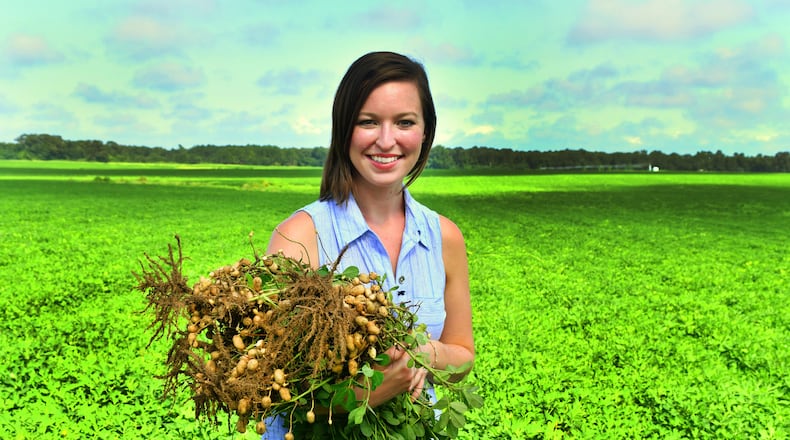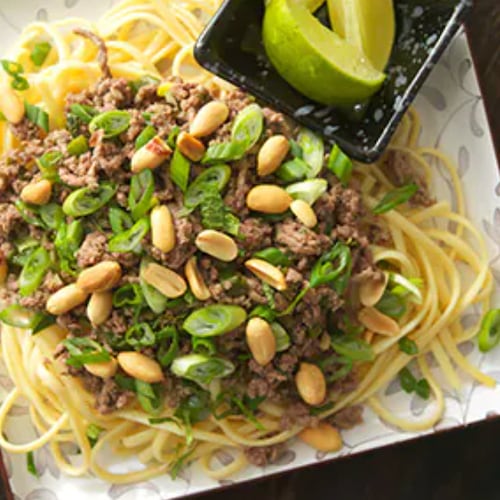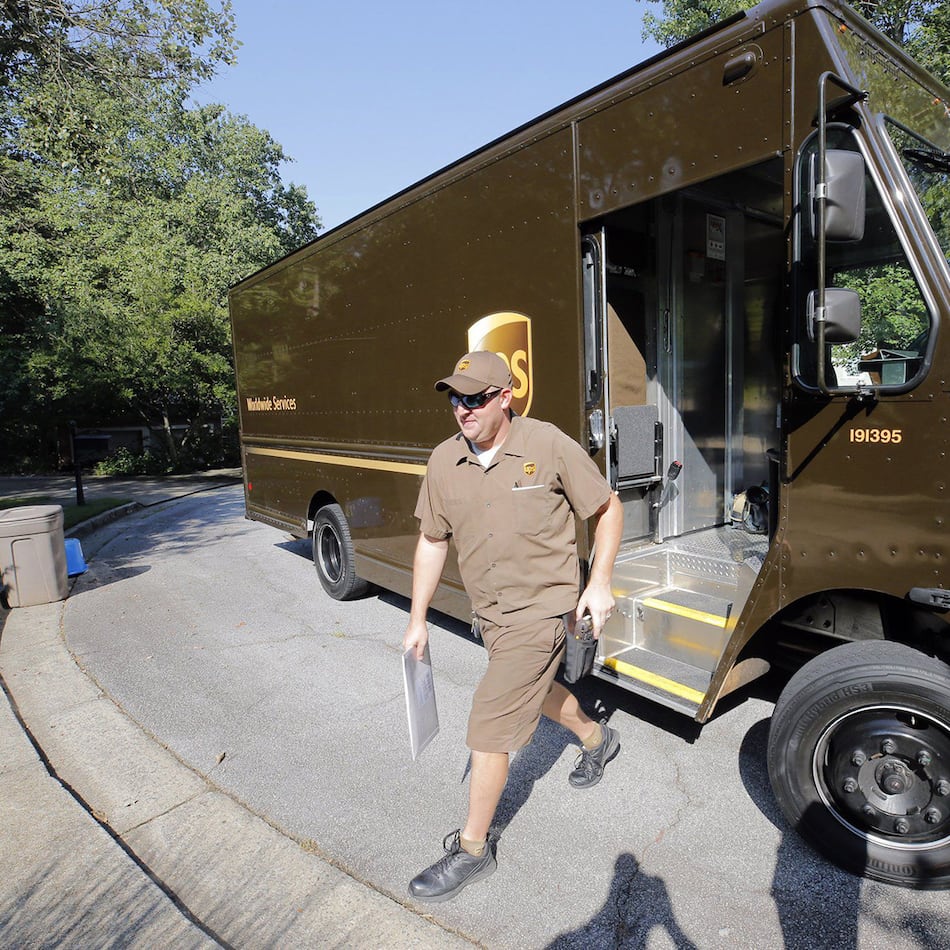CAMILLA — The gnats were determined to run me out of town.
No matter where Casey Cox led me on her family’s 2,400-acre farm in southwest Georgia, 27 miles south of Albany, gnats buzzed overhead, nipped our arms and tried to force entry in our mouths. Those buggers followed us from peanut field to cornfield, from woods filled with the tall, slender longleaf pines that lend the farm its name to the banks of the Flint River.
There’s not much that fazes Cox. Not the gnats. Not the alligator she found sunning itself on one of Longleaf Ridge Farms’ barren peanut fields back in March. After all, this is her home.
Credit: Chris Hunt
Credit: Chris Hunt
She’s the sixth generation of her family to work the land, and Cox, 30, is determined to pass it on down the line.
In many ways, she is doing the same thing that her kin has done since 1842: work the land and contend with the weather. In her case, she’s growing peanuts, sweet corn, field corn and soybeans and managing acres of timber and natural woodlands.
But her decision to leave her job as the executive director for the Flint River Soil and Conservation District in 2018 to return to the farm full-time marked a new chapter at Longleaf Ridge. It was a choice accelerated by news that her mother, Tina Cox, had cancer, a battle that she lost a year later. Now, with her father, Glenn Cox, 67, easing into retirement, his only child is scrambling to learn as much as she can.
‘Such a cool crop’
Longleaf Ridge sits in the heart of Georgia peanut country, where two out of every five peanuts produced in the U.S. are grown. Mitchell County produced 157 million pounds of peanuts last year, making it the top peanut-producing county in the top-peanut producing state in the nation. Cox’s farm produces 1.6 million pounds of peanuts a year, but that pales in comparison to other growers in the region.
The farm cultivates Georgia-06G, a high-yield breed of runner peanut developed by the University of Georgia. “It’s a fantastic variety for production, for disease resistance, for our climate and soils,” Cox said. “These are used a lot for snack peanuts, and big-time for peanut butter.”
Like she did in the episode of “Sesame Street,” in which she taught Cookie Monster and Gonger how peanut butter is made, Cox stood in the middle of one of the family’s 300 acres of peanut fields for show and tell.
Credit: Chris Hunt
Credit: Chris Hunt
Most folks know that peanuts grow underground and that a peanut isn’t a nut at all, but a legume. Few, however, have stepped into a peanut field in the summertime when the lush green canopy is dotted with tiny yellow flowers. The petals fall off as the peanut ovary begins to form. The budding ovary, called a peg, grows down and into the soil where it matures to take the form a peanut.
Credit: Chris Hunt
Credit: Chris Hunt
Cox spouted fun facts about the high-protein crop that has provided an income for her family since at least the early 1900s. Peanuts are water-efficient (requiring 4.6 gallons per ounce as opposed to other snack nuts that can necessitate upwards of 80 gallons per ounce); self-pollinating (male and female flowers appear on the same plant); indeterminate (they flower, peg and produce peanuts over an extended time period); and have an admirable ability to fix valuable nitrogen into the soil.
“Peanuts are such a cool crop! I love peanuts!” she beamed.
In Georgia, peanuts are usually harvested in September and October, when each plant will have grown 40 or more peanut pods, which is what the whole thing — the shell and the seeds inside — is called. Growers assess crop maturity by digging samples. The method the Cox family uses is called a “shell out” and involves scraping the hull of the peanut. “You can do it with a knife or even your fingernail,” Cox explained. “The color of the hull will tell us the level of maturity of the peanut.” The darker the color, the more mature the peanut.
Timing is everything because the harvesting process takes multiple days. After an inverter pulls the plant out of the ground, the unearthed peanuts are left to dry in the field for three or four days. Then, along comes a harvesting machine that separates the peanut from the rest of the plant material, which is left in the field to enrich the soil (although some farmers bale it and use it as animal feed). Damp, wet weather is a sure cause of headaches for many a peanut farmer come digging time as it can diminish the quality and quantity of the yield. But the earthy smell of peanut fields in the fall? That’s heavenly to folks like Cox.
Credit: Chris Hunt
Credit: Chris Hunt
Petting pines and raging rivers
As we walked from peanut field to cornfield, I pointed to a plant that looked out of place. A weed, indeed. “I think it’s pigweed,” said Cox. “I’m learning agronomy on the fly. I took too many forestry courses in college,” she joked.
Cox earned a bachelor’s degree in natural resource conservation from the University of Florida in Gainesville. Upon graduating, she put that knowledge to work at the Flint River Soil and Water Conservation District. This past spring, she was appointed to its nine county Board of Supervisors by Gov. Brian Kemp. But she also applies that proficiency at the farm, where timber is both a revenue stream and a revered part of the ecosystem.
For years, Longleaf Ridge has proactively managed its commercial timber and woodlands, but in 2018, Hurricane Michael made its own decisions about those 1,400 acres of trees, felling between 20% to 25% of them. Rebuilding has involved planting longleafs for their prized pine straw, a new source of income for the farm. It’ll be at least six years before the trees shed their needles , six years of caring for the trees as if they were her children.
Credit: Chris Hunt
Credit: Chris Hunt
“They’re so cute,” she said. She ran her fingers through the bright green needles of a longleaf pine still in the grass stage and invited me to “pet it.”
We walked down a narrow path to a muddy bank along the Flint River. “This is one of my favorite places in the world and a really special part of our family and farm. It’s also critical to our agricultural community here in southwest Georgia,” said Cox. Like her father before her, she was a vocal advocate for farmers in the Flint River Basin during the longtime Florida-Georgia water war.
Credit: Chris Hunt
Credit: Chris Hunt
In April, the legal dispute ended with the Supreme Court rejecting Florida’s effort to cap Georgia’s use of the water that flows to the Gulf of Mexico.
Cox credits her time as the front face of the Flint River Soil and Conservation District, an independent state agency, for instilling in her the confidence and courage to speak publicly about topics she is passionate about. Filming with a pair of “Sesame Street” muppets was fun and games. It was far riskier to participate in an episode of the Netflix series “Rotten” that explored the increase in nut allergies among younger generations.
“I was so nervous about that. I knew that was a situation where we had no control over how it would be portrayed. All we could do was tell our story. Peanut allergy is a major issue, and we wanted to be part of that conversation.”
She and her father breathed a sigh of relief when the episode aired and included their comments about peanut farmers in the U.S., through the National Peanut Board, having contributed $32 million towards peanut allergy research, education and awareness. “Because we were part of that episode, we were able to share that critical piece of information and talk about our industry in a positive light on a really tough subject.
Casey at the bat
Camilla is the seat of Mitchell County where the population of 21,755 is 10% smaller than it was 20 years ago. The area’s biggest employer is Keystone Foods, a poultry processing plant.
“When I left for college, I never anticipated coming back to the farm,” Cox admitted.
Her sights were set on Thomasville, an hour’s drive south of Camilla. She wanted to open a store downtown with her artist-designer mother. As far as studies went, she figured a business degree could come in handy.
Shortly before she left for college, Cox attended a meeting with local farmers about the Flint River at her mother’s urging. “My mom said, ‘I want you to go to this meeting because no matter where you go or what you are doing, you need to know what’s going on in your backyard.’ It was a huge eye opener to me.”
It inspired Cox to select natural resource conservation when she learned UF required her to pick two study areas of interest. Little did she know, she was laying the groundwork for a different career path.
She recognizes that, as a young woman, she is an anomaly in the ag industry. “It is a little bit rare for a daughter to come back to the farm and take over.” Yet, she noted that her return has been met with plenty of cheerleaders “who opened a lot of doors.”
Bob Parker, president and CEO of the National Peanut Board, has known Cox, who serves on the board as Georgia’s alternate member, her entire life. “Casey and I go way back,” said Parker.
“Casey is a typical case in that she is an only child. She is in a family that doesn’t have a son to be the successor to the farm. We see that a lot now,” he said. “With smaller families, we may see a farm where there’s a son and a daughter and the son wants to do something else. Until recently — and even now — dad’s want their daughter to marry a young man that can farm with them.”
But Parker noted that manual labor is not the key to farming success in the 21st century. “The secret to running a farm is understanding marketing, management, regulations and government programs,” said Parker. “Casey is as good as it gets in those areas. She’s brilliant.”
So brilliant that the National Peanut Board recognizes Cox “as somebody that could get in front of a group of food writers or manufacturing representatives or food-service people and talk about peanuts in the new age of farming,” Parker said. “We have to not overuse Casey because we know so many other organizations are eager to use her as a spokesperson. We just did a film shoot at her farm Monday and Tuesday of this week,” he said during a phone interview in late September.
The Board sees such leadership potential in Cox that she was nominated to fill the Georgia seat when the term comes up for appointment by Secretary of Agriculture Tom Vilsack in 2022.
Cox has been integral to blazing new trails at Longleaf Ridge, too. “We have really transformed the way that we operate, especially compared to my dad’s generation and my grandfather’s generation,” she said. “We have new tools, technologies, practices, and we’re able to grow significantly more on the same land than when even my dad first started farming.” She credits collaboration with the UGA Crop and Soil Sciences department and the USDA’s National Peanut Research Laboratory in Dawson for the farm’s modernized systems, especially irrigation.
She is also bringing her own ideas to the plate. This month, she will launch an e-commerce business, Casey Morgan’s, which bypasses the middleman to deliver fresh sweet corn direct to consumers in five Southern states. To further diversity the revenue stream, Cox is developing corn and peanut food products under the same label.
“We’ve always done the wholesale, raw commodity thing,” she said, lamenting corn prices earlier in 2021 that didn’t even cover production costs. “We only have two seasons a year. Creating a value-added branch of the farm is a way I am hoping I can carry the farm into the future.”
Cox may be a single child, but she won’t walk into the future alone. She and her fiancé will tie the knot next spring. With his job 250 miles away in Rome, and her farm in Mitchell County, wedded bliss will still mean bumpy road trips.
At least their walks together through peanut fields and pine trees will be more peaceful than ever: After enduring gnats in her face for three decades, Cox is now the proud owner of his and her bug-repelling neck fans.
For more information about Longleaf Ridge Farms, visit longleafridge.com. Find more stories about Georgia farmers and recipes for their products at ajc.com/georgia-on-my-plate.
About the Author
The Latest
Featured









